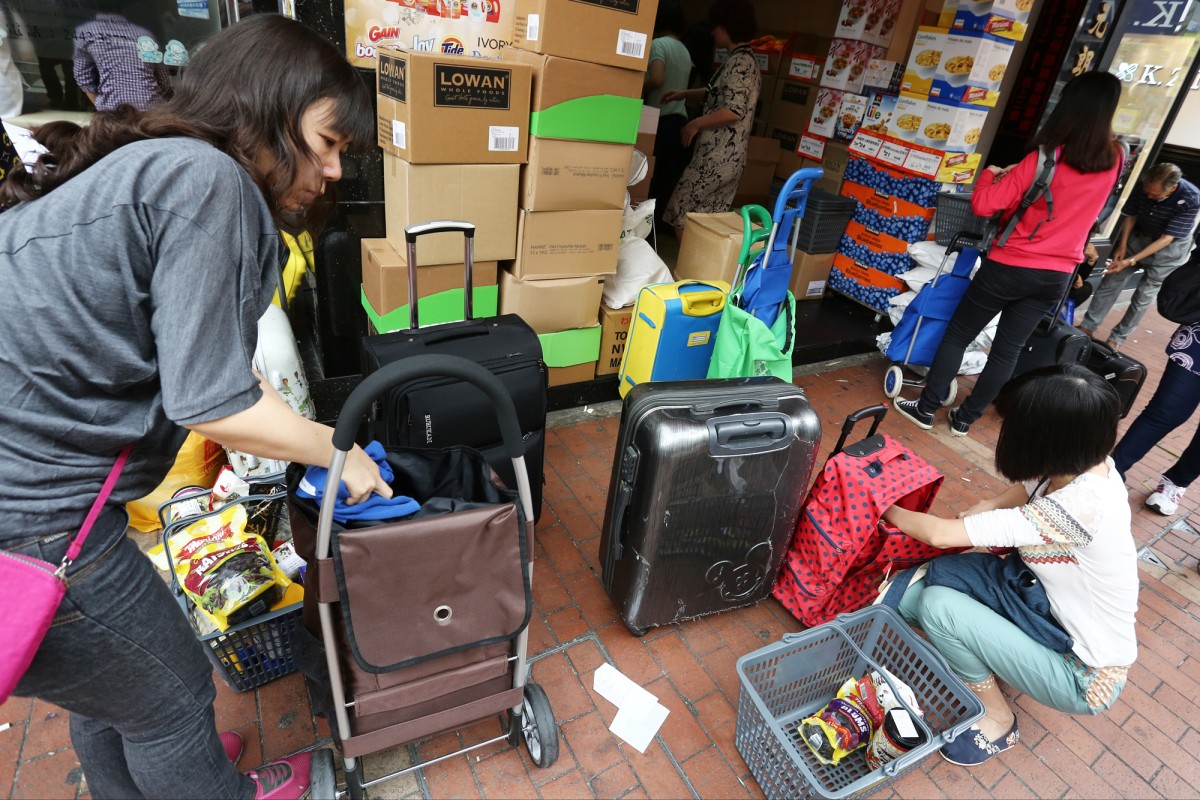
Face Off: Cutting the number of Shenzhen visits to Hong Kong is an effective way to solve the parallel trader problem
Are parallel traders a problem in Hong Kong? Will controlling the number of visits help? Two students battle it out ...
 Shoppers packing up their loot in Yuen Long.
Shoppers packing up their loot in Yuen Long.Bianca Chan, 16, Maryknoll Convent School
The multiple entry scheme, which started in 2009, has long been used by parallel traders as a tool for profiteering. They have been blamed for skyrocketing rents and overcrowding in border towns. This year, Chief Executive Leung Chun-ying finally decided to tackle the real culprit by limiting visits from Shenzhen residents to one per week.
The proposal was clear: existing multiple entry holders would still be entitled to unlimited visits until their one-year permit expires, while new applicants would be subjected to the quota. The policy is expected to trim visitors by 30 per cent, or 4.6 million per year.
From an economics standpoint, the new scheme will help reduce parallel trading. With a limit on visits, traders will make a lot less money each month.
Hongkongers could take up trading jobs, but parallel traders are seen in a much less favourable light here than in Shenzhen. So the number of locals who are willing to do the work may be a lot lower than those who stop doing it because of the new proposal.
With parallel traders causing a nuisance, the new plan unveiled by Leung is definitely a step forward towards enhancing the quality of life for local residents. While it remains to be seen how effective the new measure would be, I am positive that our city will soon see cleaner streets and a quieter MTR.
Michelle Fasching, 17, Maryknoll Convent School
The history of parallel trading between Hong Kong and China dates back to the Qing dynasty, but in recent years, it has caused a shortage of food and other items in Hong Kong. This has caused inconvenience to a lot of people here, especially those living near the Hong Kong-Shenzhen border.
In an attempt to discourage parallel trading, Shenzhen has imposed a one-visit-per-week limit on travellers from the mainland city to Hong Kong. While such a limit may reduce the number of Shenzhen visitors, it will have little effect on parallel trading.
Currently, only restrictions on milk powder are being strictly enforced. There are no curbs on other items, so they are being regularly exported north, causing their prices to rise. This shows that the visitor limit has not helped reduce parallel trading.
The parallel goods trade does not suffer from a lack of labour. The transportation of goods is simple and requires little skill, but pays very well. Because of this, many people are willing to do it. With ringleaders using the internet to recruit workers, finding people to actually transport the goods is easy.
Also, because there is no limit on Hong Kong people going to Shenzhen, mainlanders could recruit Hongkongers to do the transportation.
Therefore, cutting the number of visits by Shenzheners does not solve the problems caused by parallel trading.
If you're interested in debating for Face Off, email Heidi with "Face Off application" in the subject at [email protected]